Sign In
CloseMushroom Guidesheet #3--Genus Morchella and Mimics by SpiderMilkshake (critique requested)
:D Now moving on to one of my favorite genera of mushrooms--Morchella, also known as the Morels!
Every species known of this genus of True Morels is considered a choice edible mushroom. Not only are they delicious, they are sometimes extremely abundant (given you're looking in the right place XD) and have been studied as a food with great nutritional and medicinal benefits! Their natural vitamin D content is considerably higher than our society's more artificial sources like enriched milk.
Basic Morchella identification traits:
-Morels of all types have a strongly pitted surface. It should never be like folds or lobes, but a honeycomb-like arrangement of oblong holes in the cap.
-Morels of all types have a hollow interior. Sometimes the stalk will contain a few fibers, but overall there will be nothing in the cap or stalk and it should not be stuffed with tissue or fibers.
-Morels commonly grow in association with certain trees, being mycorrhizal for at least a portion of their lifestyle. Most common trees that morels grow as partners with are ash, tulip poplar, apple, cherry, elm, and beech. A few species do grow in other places or with other tree species.
-Morels have a tall cap that is fully attached to the stem. You can see this easily in a cross-section: Little, if any, cap tissue should hang free at the bottom.
Morels are divided into morphological categories which contain multiple species: Yellow morels, gray morels, and black morels! The standard morels you will find in the warmer spring months are the yellow morels especially Morchella esculentoides. Gray morels, especially Morchella tomentosa, prefer burned land and conifer forest, making them the odd ones out. The black morels have a few oddball species too, such as Morchella septentrionalis which looks like a small version of Morchella angusticeps and tends to grow on or near very degraded woody substrate. It is one of the safest genera to pick mushrooms from as, even when the species is mistaken, you can be assured that all true morels are edible and delicious!
Mushrooms in the genus Verpa and those in the genus Gyromitra are sometimes mistaken for true morels, but once you've gotten a look at a true morel the mimics seem very easy to distinguish. I've illustrated one of the more common species of genus Verpa. Species of Verpa are considered by some to be edible, though not as choice as a true morel and examples of gastrointestinal distress from eating these have been documented. I advise not gathering these species for food for safety's sake, as some have been analyzed and found traces of toxic Gyromitrin in them.
Verpa conica and Verpa bohemica identification:
-Cap is only attached at the top of the stalk, with the rest hanging free.
-Surface of the cap is smooth to only wrinkled, not pitted.
-The cap, when removed from the stalk, fits over a finger like a thimble. (This gives rise to a common name, the Thimble Morel)
-Stem is loosely stuffed with many small fibers.
-V. bohemica is larger, and both are usually found under hardwood trees.
The mushrooms in genus Gyromitra have a strange culinary history. For a long time (and to this day, in some parts of the world, particularly Scandinavia and the Great Lakes region) several species were considered a choice edible with an intensive parboiling process cited to make these mushrooms "safe". Which the active toxin Gyromitrin is water-soluble, even in times when it was considered edible there were cases in which simply breathing the parboil fumes caused potential chefs to pass out, convulse, or grow ill. Many deaths have been caused by these toxic fungi. And interesting thing to note is that Gyromitrin, when heated or exposed to strong acid tends to chemically transform into another toxic compound known as Monomethylhydrozine (MMH). This is also a component found in rocket fuels, and has an extremely destructive (and cumulative!) effect on the central nervous system, causing nausea, vomiting, cramping, diarrhea, convulsions, jaundice, coma and death. Still, to this day some avid veterans will swear to you that "proper parboiling" will render this safe to eat. I say NOPE, do not let a single drop of this poison pass your lips. You might not get symptoms after your first dosage, but the poison stays in your body until it is concentrated enough to kill you.
Gyromitra species identification traits:
-Typically these are mycorrhizal with various species of conifers, especially pines.
-The cap is heavily folded, wrinkled, lobed and many species are quite brain-like.
-The interior of the upper stem is filled with tissue, while the stalk is partially hollow.
-These fungi can be quite huge, with caps larger than your fist.
-Gyromitra gigas, the Bullnose Mushroom or White False Morel, is a pale species with fewer, larger folds. It is, bafflingly, sometimes still sold at Whole Foods stores in the produce section (albiet with massive warning labels).
-Gyromitra esculenta, the Brain Mushroom, the Lorel, the Black False Morel, has the dark, reddish brown cap pictured above. While a gorgeous mushroom, it's the most toxic of the known species in this genus.
:D Hope this helps in the upcoming Morel hunting season! Stay safe and remember the safe mycophage's motto: "When in doubt, throw it out!"
I adore drawing these guys even though drawing true morels is a pain in the butt. XD All those little pits...
Submission Information
- Views:
- 1006
- Comments:
- 4
- Favorites:
- 2
- Rating:
- General
- Category:
- Visual / Traditional


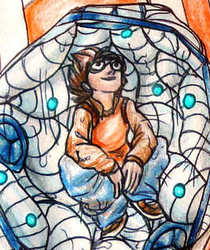
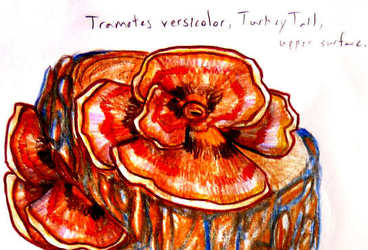
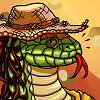
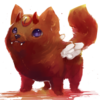
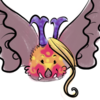
Link
keirajo
These ones are quite colorful! :)